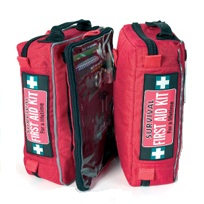Climate change is the rising of the Earth's standard temperature. Climatic change started in the late 19th century and has not really ended increasing since then. Our planet's temperature has increased by 0.8 degrees Celsius since the early nineteen hundreds with two thirds of the total increase happening from the 1980.
The one thing that has contributed widely to this change of weather is greenhouse gases like carbon dioxide, nitrous oxide, methane and water vapor. This is as a result of human activities, such as burning of fossil fuel and the continuing deforestation. Because of this, climate change is the biggest humanitarian and environmental crisis today. The atmosphere is choking from too much carbon dioxide, because carbon dioxide traps heat in the atmosphere causing the disruption of the climate.
Results of GLOBAL WARMING
Global warming is mainly responsible for the sea levels to rise because of the melting of the ice sheets so that the lowland islands are in constant danger of being covered by the water this will prove to be a big problem to the people and ecosystems of these islands. Storms and hurricanes have become stronger, droughts and floods are becoming more and more common. In a few years' time there is going to be less fresh water available, spread of diseases such as malaria in areas that did not suffer from these diseases and change of ecosystems.
Considering that people are becoming more aware and can experience the impact that climate change is having on their lives, more and more people are requiring for action to be taken to reverse this trend. But since the impacts will take years even to reverse the best thing to do is to prepare for the effects of climate change.
DISASTER PREPAREDNESS
With the changes of weather that have been brought about by Global warming you always need to be prepared for anything whether you live in areas that are prone to natural disasters or not. Hurricanes, floods, earthquakes and tornados are capable of destroying a whole region or a town for days and even weeks this catastrophic event usually causes death and injuries to people and they can be very devastating especially if you are not prepared.
A first aid kit is a tool that everyone must have because it is the first medical assistant line that is used during emergencies, especially if the nature of the emergency is such that help cannot get to you first the first aid kit can help save your life.
Putting together A SURVIVAL FIRST AID KIT
The first and essential thing that every emergency first aid kit should have is water remember. In the course of catastrophes like flooding or tornados the main water pipes can be contaminated and the water may not be safe for drinking. While you can go for many days and weeks without eating, you cannot survive for more than a week without water.
Food is the next thing you should make sure you have in your survival kit. The food should be non-perishable with the best option being canned food, it is also advisable to pack a can opener preferably non electric.
Because most large scale disasters result in power loss that take hours, days and sometimes weeks depending on the scale of the damage, having a flashlight in your kit may prove to be very handy. Make sure to choose a flashlight that does not need any batteries.
Have some clothes, sleeping bags and blankets just in case your home is destroyed or becomes uninhabitable. You can also pack duct tapes and plastic sheets to put up a shelter that you can temporarily live in before you are rescued. Have a medical kit prepared containing important things like rubbing alcohol, medical tape, gauze, aspirin ice pack, tissue pack and bandages. Lastly have a book in which you have written contacts like emergency, and relative contacts also write down important financial information like credit and bank card numbers.

